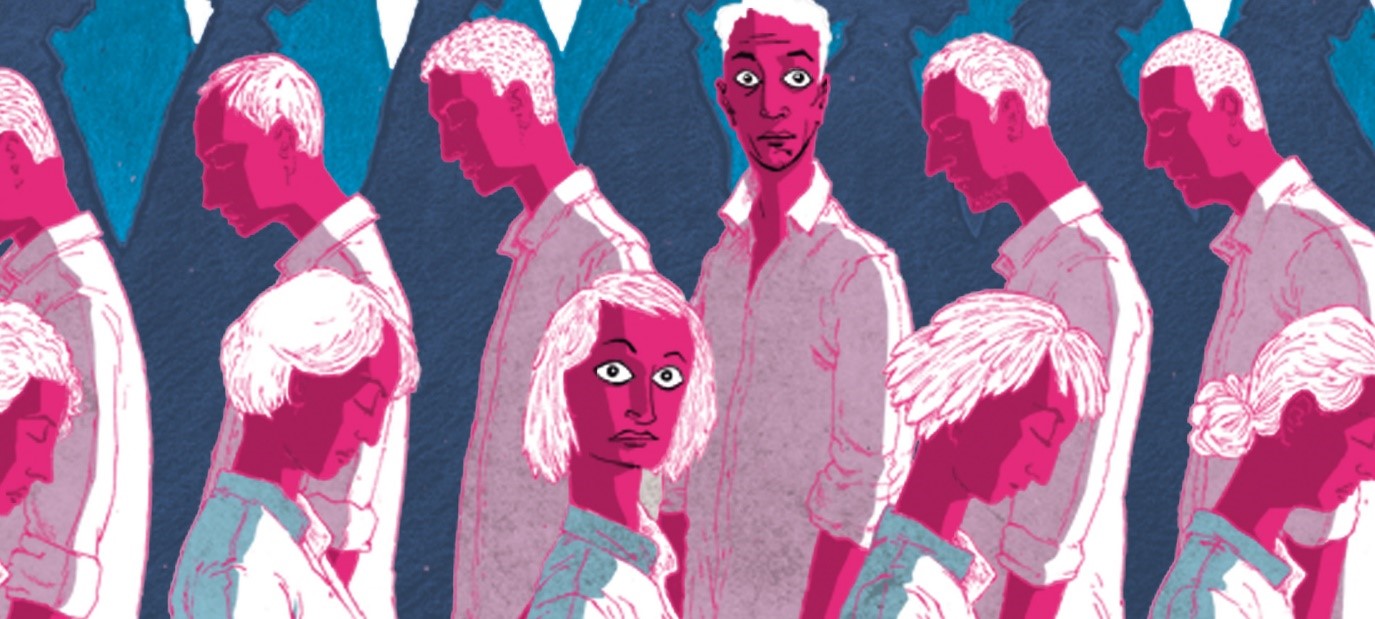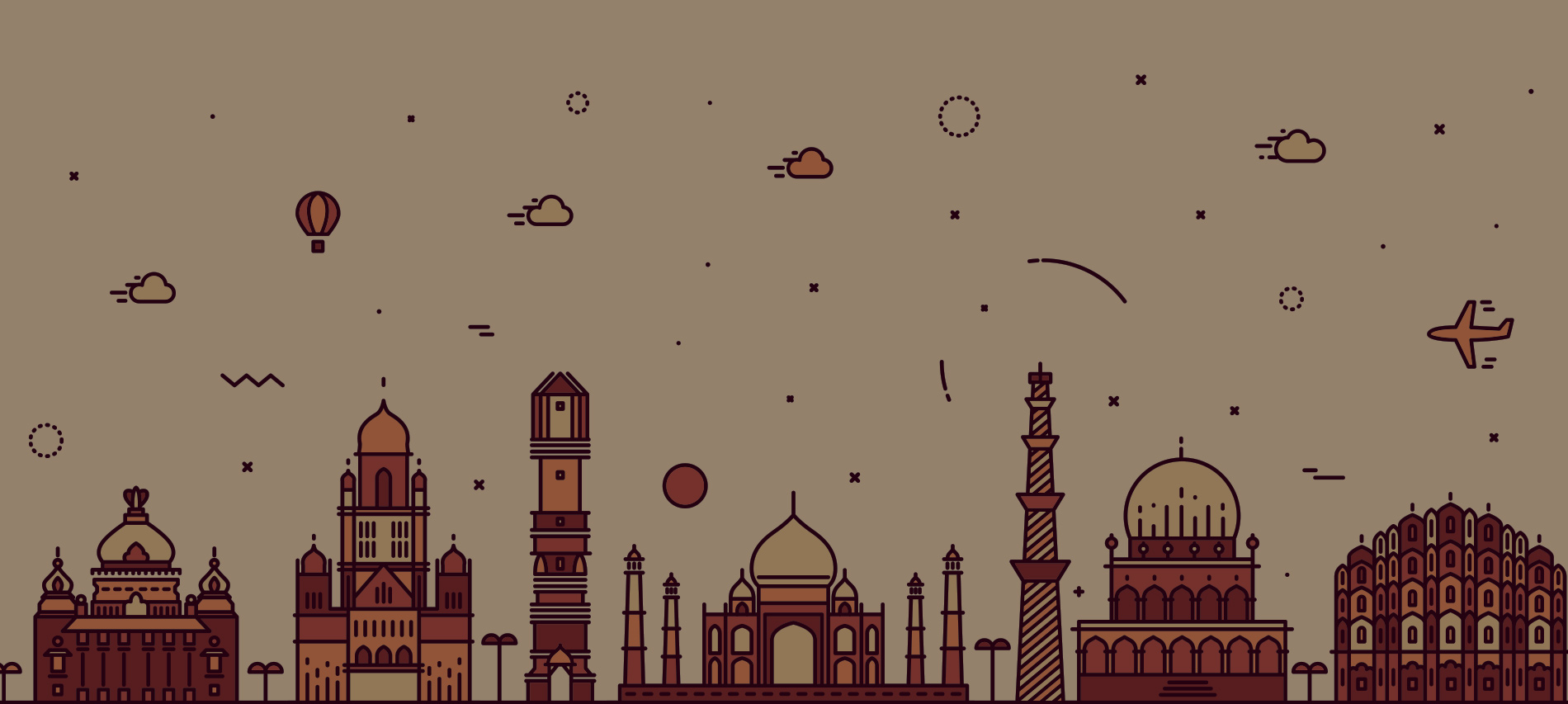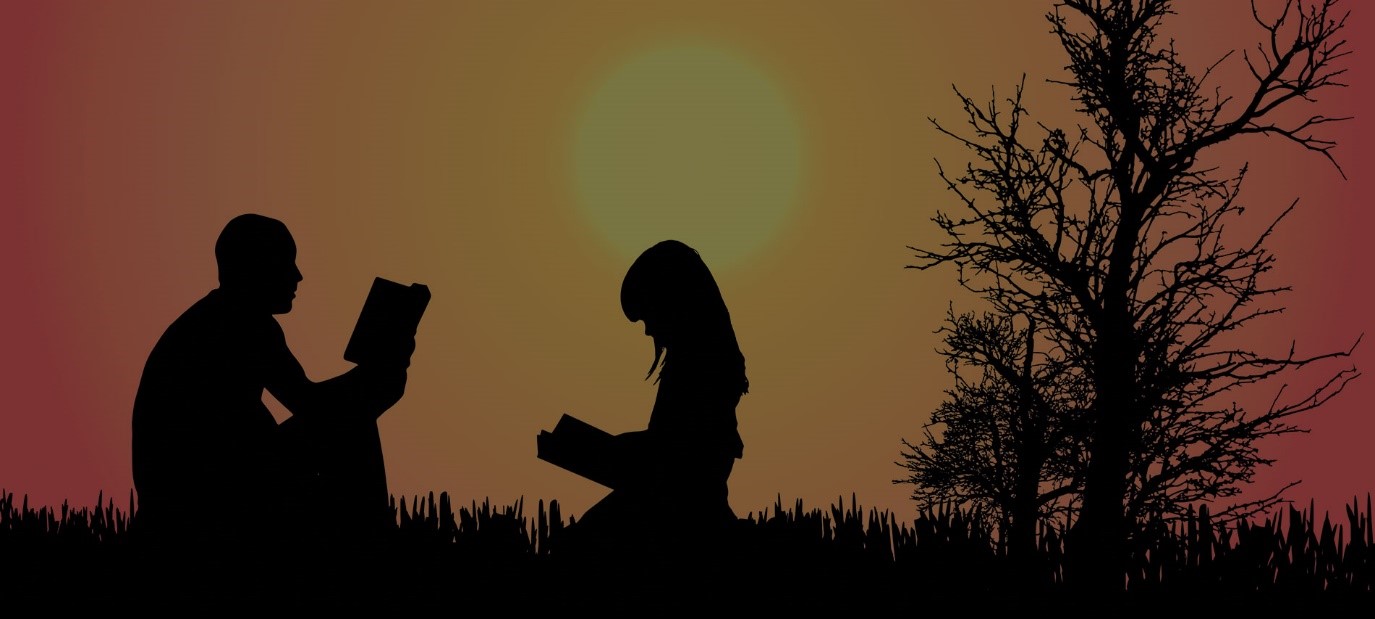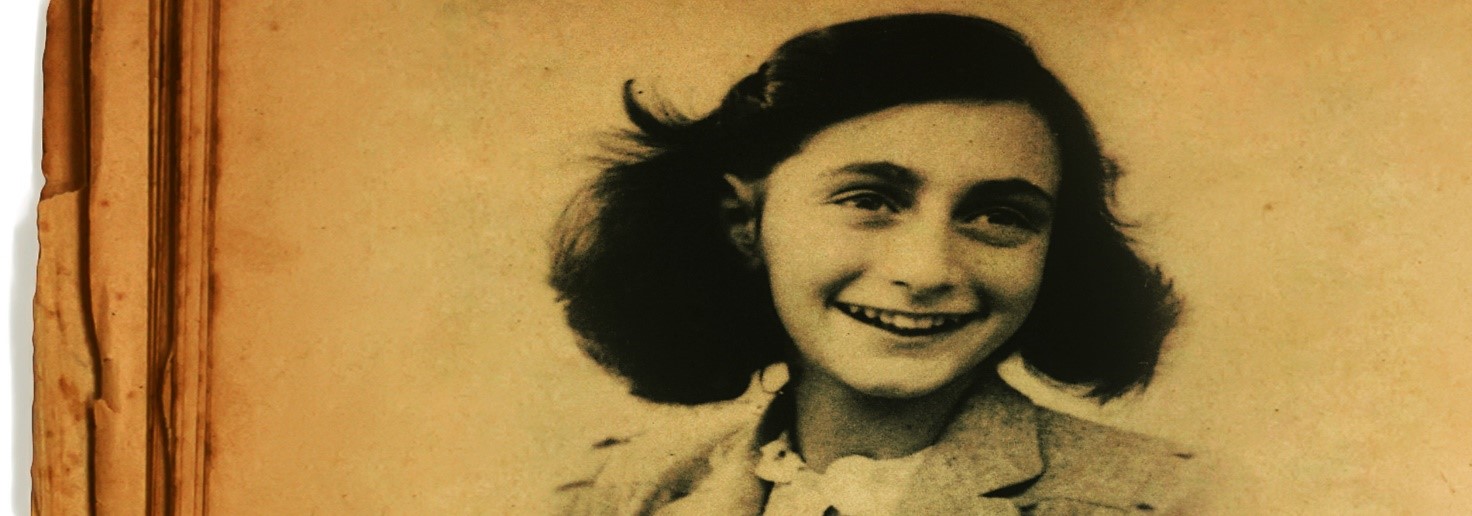George Orwell’s dystopian masterpiece, Nineteen Eighty-Four, is perhaps the most pervasively influential book of the twentieth century, and here are a few important themes of the book that we need to be mindful of.
Totalitarianism: Total Control, Pure Power
The Party – the controller of the superstate – “seeks power entirely for its own sake.” As an official admits: “We are not interested in the good of others; we are interested solely in power, pure power.”

Propaganda Machines
A well-organized and effective propaganda machine goes a long way in ensuring total control of the Party over the superstate and its residents. The regulation and dissemination of information involves “tearing human minds to pieces and putting them together again in new shapes of your choosing.”

The Thing Called Love
The totalitarian knows that to rule people he needs to quell all ways of achieving happiness and fulfilment. Therefore, love and sex, two of the most enriching human experiences, are killed and depersonalized.

Liberty and Censorship
The Ministry of Truth works tirelessly and meticulously to modify public archives and rewrite history. As a result, “the past was erased, the erasure was forgotten, the lie became the truth.”

Language: Doublethink and Newspeak
The residents of the superstate are forced to communicate in Newspeak – the government’s invented language. It plays a pertinent role in the Party’s control over the masses.

Technology: All-seeing Telescreens and a Watchful Eye
The Party needs and develops top-notch technology to exercise ruthless control over the residents. Without telescreens, the Thought Police would fail in its objective of surveillance. And, of course, overseeing all of this is Big Brother.

Gripped by the themes above? Are you going to read or reread Nineteen Eighty-Four? Do tell us about other ominous themes of the book that all of us should be mindful of!
Tag: Penguin Random House
5 Must Read George Orwell Books
George Orwell, a man of strong opinions, is known for commenting on some of the major political movements of his time. Addressing issues like imperialism, fascism, and communism, Orwell’s books are popular for raising important issues like no one else.
Here are five must read books by the brilliant author:
Animal Farm

One of Orwell’s most popular books, Animal Farm combines Animal fable with political satire targeting Stalinist Russia. Although going beyond only one particular time, Animal Farm makes a statement about human society everywhere. Chosen by Time magazine as one of the 100 best English- language novels (1923 to 2005), the allegorical novel exemplifies the democratic socialism that Orwell’s novels are set to advocate.
Burmese Days

Burmese Days was published in the UK in 1934. A tale of the old days when Burma was ruled from Delhi as a part of British India, Burmese Days describes the corruption and bigotry of imperialism. Set in 1920s in the fictional district of Kyauktada, the book is often known for its harsh portrayal of the time. In a letter from 1946, Orwell said “I dare say it’s unfair in some ways and inaccurate in some details, but much of it is simply reporting what I have seen”
Coming Up for Air

One day a salesman wins some extra money and goes back to his village. Coming Up For Air is a different coming of age novel where the protagonist has to come to terms with the changes that have taken place in his village, has to let go of his childhood memories and accept the new times.
Homage to Catalonia

Published in 1938, Homage to Catalonia is a must read because it is George Orwell’s personal account of his experiences in the Spanish Civil War. It is a gripping read describing up close and personal the horrors of war, the lack of food, poor guns and what it is like to be wounded. The book brings alive the complications of the Spanish Civil war and proves to be a vivid and engrossing read.
Down and Out in Paris and London

Orwell’s vivid descriptions on the theme of poverty include an account of life in near destitution in Paris, experience of casual labour, a tramp’s life in and around London. The brilliance of tragic-comic expressions is what makes the book a unique and interesting experience.
Pick any book and you’re in for a wonderful read!
Art in the Time of Orthodoxy
By Faiqa Mansab
There is a saying in Punjabi: When you make friends with elephants, you should build bigger doors. I’ve always felt that’s an apt way of describing what being an artist means. Art is the elephant; and an artist must make space for the subsequent battles that their art lets into their life. Such battles are small at first: about time spent doing ‘better, more useful things’; then the battles are angrier, ‘you want to end up dead?’ Rubbing the orthodox demagogues, the wrong way isn’t safe in my country and I chose to write stories that are taboo, dangerous even, in the current scenario.
For orthodoxy and extremism to succeed—and they are conjoined twins—a single identity is imperative. Plurality weakens the declaration of ‘us’ versus ‘them’ necessary to the narrative of dogma and so plurality is being systematically shunned. When religion is constructed as the defining feature of a society, then any difference in opinion is perceived as a threat. The bid for a religious identity must be singular, and it must be patriarchal—much like the concept of nationalism. Such an ideology is based on binaries: one must hate in order to love. Extremism is a necessary tool to the fulfillment of nationalistic jargon and jingoism, even though both are in response to global power dynamics and socio-economic oppression.
The battle between organized religion and spiritualism is as old as religion itself. Art for me is a kind of spiritual expression. Doctrine commands that life must be lived with rules. An artist, by nature, flouts rules. Spiritualism suits me better than orthodox tenets, even if spiritualism is currently out of favor within the society and State I call home. This is precisely because conventional religious dogma suits the State. Orthodoxy means rules, rules mean control and control means power.
It isn’t a West versus Islam condition at all. Even a largely Muslim majority country like Pakistan is facing ethnic and sectarian issues because difference is not tolerated in any form at any level. Look at what is happening at Sufi shrines, the very cradle of love and tolerance is being targeted to reinforce orthodoxy.
Extremism around the world is fed by the ‘us’ versus ‘them’ psyche, spreading like a contagion; and it is not just xenophobic, Islamophobic, anti-Semitic. Shia versus Sunni; liberal versus conservative, orthodox Muslim versus Sufi Muslim, neighbor versus neighbor—as if 1984’s Orwellian universe has become the new reality. These days one must have a single identity to be considered ‘true’ to one’s country, one’s race, one’s people. Not having a single identity makes one suspect. Plurality and hybridity are threats to be eliminated. Hence the witch hunt against seekers of truth—journalists and artists ongoing in Pakistan.
When society is divided between self-proclaimed self-righteous soldiers of God and ‘others’, then any deviation is open to interpretations of madness, of rebellion and sin. When ‘justice’ is meted out by mobs, and social media becomes a platform for shaming and blaming rather than a platform of freedom of speech, then extremism has already infected the socio-political fabric of society. It is already an unstable environment where conformist thinking has taken strong root and flowered into radicalism. These conditions bother me and in my stories, I’ve tried to depict this volatile and insecure place where law is open to interpretation by the highest bidder.
There is a lovely poem in Urdu by Dr. Khalid Javed Jan “Main Baghi Hoon”. It’s a beautiful poem about an artist, a person of principles, who is aware that he dares to do the right thing by speaking out against oppression. It’s one of my most favorite poems.
Man is a political animal. So is woman.
The worst off in this tussle, as in many other power struggles over the past centuries, are women. Their bodies are the site of struggle between conformist and liberal thinkers, and patriarchal wars are waged on their bodies. Should women be ‘allowed’ to wear the hijab? Should they be ‘allowed’ to wear burkinis? Should they be ‘allowed’ to wear bikinis? If perchance, it’s the body of an immigrant woman, then the right to speak about it, to dictate to it, to pass laws and judgment on it, increases manifold.
It began with Eve, who was not only an exile but also an immigrant. She came to a new world, leaving the familiar, her home—the Garden of Eden (‘Home’ is always the garden of Eden in memory and nostalgia) looking to build a new life with Adam on Earth. Immigration is ingrained in human psyche. It is a natural progression for some, a necessary act of survival for others.
There is another kind of immigration that the world finds problematic: the one between genders. Where do people of indeterminate gender, people who choose to change their sexual identity go? There is no country for queer people.
We can all agree that gender is a political declaration. My novel, This House of Clay and Water tells the stories of Bhanggi, Nida and Zoya, a hermaphrodite, a woman, and a child who are victims of their place, their society and culture, because of their genders and because they do not conform. Gender is still at the heart of power struggles in a lot of places in the world. And place, space, position is important in negotiating with power. Where one is from, and where one can go, are equally dynamic parameters of negotiation.
I often wonder, what art means. It is a roar against patriarchy for me, and it is a declaration of independence against conformity. Art reflects its times and the response of people to those times.

Samah Visaria on Millennials, Marriage and More
Samah Visaria is a marketing professional by qualification, but a storyteller by passion. She is a keen enthusiast of fashion, food, and films, and wants to trot around the world. She lives in Mumbai with her best friend who also happens to be her husband.
I grew up on a heavy diet of Hindi films – Bollywood of the 90’s and after. Love, romance and marriage were concepts I got well-acquainted with at a young age. On idle afternoons I would ransack my grandmother’s cupboard, rummage through her makeup, decorate myself like actresses and admire my dressing up skills. Playing bride (remember ghar ghar?) was my favourite game and I conducted my fictitious wedding every third day. There was no need for a boy in these enactments; he seemed to have a supporting role anyway. For the parts that he was needed I would do a double role or better still imagine him. So I alone was enough to conduct, participate in and be audience to my wedding. If only it was that simple in reality!
As a teenager I found the idea of marriage highly exciting. I was the quintessential Geet from Jab We Met – with an undying shauk for shaadi. I could spend days imagining my wedding, the jewellery, the makeup, THE CLOTHES! I could hardly wait to have a wedding. But did I want a marriage? Did I even know what marriage really meant beyond the shyness of a bride and machismo of a groom? Maybe not.
As the years went by my obsession with weddings only grew, but the idea of marriage made me wonder. It seemed a bit extreme, idealistic. If it worked it could be amazing, but what if it didn’t? Could I know the outcome before trying? After how many years would it become divorce-proof? There were no answers to my questions. There was only the hope of a crazy romance that would culminate into marriage and children and a happily ever after – the usual fare.
People would ask ‘Do you want to have an arranged marriage or love marriage?’ I found it a weird question. Movies had taught me that all the romance was in the former, but reality was proof that either is a gamble. Rationally speaking love marriage was a safer bet (a known enemy is better than an unknown friend). But was the choice really in my hands? Can anyone decide in advance what type of a marriage they will have? I don’t think so. If you fall in love you have a love marriage, if you don’t your marriage is arranged. The only constant factor is marriage.
India today is a phenomenally changed place from it used to be. The Millennials are constantly innovating. They are reinventing traditions if not omitting them completely. And this has landed us in being an absolutely confused generation. We want the virtuousness that surrounds tradition but we want to break stereotypes and bask in the glory of our bounded freedom. While a section of society is fighting for the dark skinned another is hiding behind filters. Everybody wants to support the imperfect but nobody can handle being imperfect.
Live-ins, same sex marriages, lifelong singlehood, unconventional marriages (I heard someone married a railway platform. What?????) are making the ‘love marriage v/s arranged marriage’ debacle redundant. Yes, it still holds a place, no doubt but there is major overlapping in territories landing either concept in the grey shade, the intersection between ‘love’ and ‘arranged’. I call this Arranged Love wherein parents support their child’s choice for a partner at the onset of a relationship so long as their criteria is met, and men and women are ready to marry someone of their parents’ choice so long as they feel they can fall in love with them first.
So while we are making efforts to move out of Blind Arranged Marriages (where you meet your partner for the second time on your wedding day), another phenomenon has made a grand entry into the market – The Wedding itself.
The Big Fat Indian Wedding is at its Fattest. While India at large was against love affairs at one point it is having a roaring affair with weddings today. With social media on its way to take over our world completely weddings are trending like never before. The marriage market is gutted with all sorts of vendors. A new career is born every wedding season. An article by Business Insider in 2016 stated that the wedding industry in India is valued at over Rs. 1,00,000 crore and is growing at almost 30% annually. On an average, a person spends one fifth of the wealth accumulated in a lifetime on a wedding ceremony.
The trend of Destination Weddings has a big hand in the evolution of weddings. Even before deciding who they will marry people now decide where they will marry. Having the perfect wedding has become more important than having the perfect marriage. Arranging a wedding is no less than a business deal. While dowry may be illegal there’s no stopping the recently modernized orthodox from calling middlemen with their wedding budget to find a party with a similar package to pay for the ceremonies. I know someone who knows someone whose parents talk in numbers when approaching parties for their daughter’s wedding (marriage).The rest is secondary information. The preliminary scanning is the wedding budget.
Wedding planners have flooded the market. Halls and venues need to be blocked 9 months to 1 year in advance because of the rush in peak season (November to February). Makeup artists give their dates like movie stars. Gone are the days when the photo lab around the corner was hired to shoot the people eating at your wedding. Professionals have given up full time jobs (and the financial security that comes with it) to become wedding photographers. They come with their own set of conditions and contracts and give you the footage in a Trailer + Movie format.
Personalisation is everything. The modern Indian has taken every tradition and given it a twist, made it personal. From wedding T-shirts to portrait mehendi, from extravagant cakes to intricate lehengas that tell the couple’s story, the flamboyant Indian is ready to pay obscene amounts to creative heads to get more creative. The wedding is not just an event anymore. For the period it is being planned it is treated as a separate entity, having its own name, app and website! At this rate it won’t be long before potential marriages don’t work out because the bride’s and groom’s names don’t form a witty enough hashtag!
It’s this rapid shift in society that I witnessed over the years that prompted me to write a story about a fat girl’s experience in a crazy, perfectly imperfect world. Ours has become a world in which finding love could take just one click. And despite the ease with which we can reach one another today and the constant existence of others in our lives (thanks to the internet) people constantly complain of loneliness. Finding true love and happiness could be as difficult as it seems easy.
I wanted to write a simple story, relevant to the generation of today; in sync with the way everything is around us. The idea of a fat girl’s brush with arranged marriage was something that resonated with my idea of a contemporary story. What must finding love be like for a person who does not conform to the Photoshop-savvy generation of society? How would a person who is sandwiched between the Shaadi.com and the Tinder varieties adapt to manage with both? In a time of acrylic nails and eyelash extensions how would stretch marks and pimples survive? These thoughts sowed the seed of a plot in my mind and eventually gave birth to Encounters of a Fat Bride.
Although the story is a light and breezy, comical read it has a strong message that tackles various underlying issues like dowry, arranged marriages, inequality, body shaming, social media pressure, social anxiety, social physique anxiety (the pressures placed on young men and women to portray an ideal physique).
A good-humoured and light-hearted tale based on a heavy subject, the book tries to capture what it’s like to be flawed in this day and age. It shows that our perception of flaws is flawed within itself. It exemplifies that we are unhappy with what we find because we are looking for the wrong things in the first place. It simplifies life.
Madhurima Pandey is twenty-five, single, and gradually coming to terms with the annoying ‘you’re next’ nudges from family and friends. But soon they realise that chances of finding a groom for her are slim, mainly because she’s not. At 93 kilos she knows she isn’t the ideal weight for marriage, even if her family believes she’s the ideal age.
Despite her reservations, a hunt begins, and so does a spree of rejections – until Harsh comes along. Madhu cannot believe that a boy with no obvious flaws has agreed to marry her. Low self-esteem makes her suspect he’s either impotent or homosexual, but she doesn’t turn down the proposal immediately. A negligible period of courtship and a hurried engagement follow. But does Madhu really find her happily ever after? Or are there more surprises in store?
Jovial, witty and unapologetically honest, Madhurima Pandey’s story of struggle and survival in the run-up to her D-day gives you a refreshingly new take on the big fat Indian wedding.

4 Books by Gita Mehta that Give You a Glimpse of the Real India
Writer Gita Mehta, born in Delhi but straddling her world between New York, London and the Indian capital writes four fascinating tales of India, going beyond the textbook definition of how we know it. Drawing largely from personal experiences and observations made not just from within the country, but as an outsider too, Mehta spins a masterful yarn of myths, legends, mysteries and shocking truths. Refreshingly irreverent, brilliantly candid, her four stories give a different slice each of the country we can only ever dream of knowing completely.
A River Sutra

Denouncing a life of unimaginable riches, a retired bureaucrat settles on the banks of river Narmada in search of solitude and peace. But little did he know that the mysteries of a young lover, an ascetic and a lovelorn woman were about to rock his boat as they unravelled on the banks of the holy waters.
Raj

Standing at the brink of a loveless marriage, motherhood and a freedom struggle that threatens her sovereignty, Raj is the journey of a royal Indian princess in the late nineteenth century – a journey taken through not only her soul, but also through her life’s biggest reality crumbling in front of her eyes.
Karma Cola

The mystical east, at the heart of which lies India, is the land of tigers and snake charmers, mysteries and the divine. It is where the West descends in search of spiritual answers. Amidst this heady cocktail, Gita Mehta busts a myth or two in her novel Karma Cola. From The Beatles to the stars of Hollywood who came to India on their spiritual quests, the novel sets off on a trail of half magic, mortal gurus and some ugly and bitter truths.
Snakes and Ladders

A land of paradoxes, India is a canvas of fascinating opposites that seamlessly blend to form the regular, the every day. From continuing to nurture the centuries-old caste system to fuelling the birth of the world’s largest cinema industry after Hollywood, Snakes and Ladders is an unapologetic zoom-in to an India at its most honest, most shocking.
Which story did you think comes closest to your idea of India?
5 Books To Gift Your Dad This Father’s Day
Fathers have been our first superheroes, first teachers, and best friends.
So what do you say to a man who leaves you speechless with his actions and immense love? If you too find it difficult to articulate your feelings in words, here are five books that will do the job for you and will make for the perfect gift this Fathers’ Day:
The Digital Matrix
 Venkat Venkatraman simplifies industrial and digital companies. It is a management framework that will help you understand the forces that influence your business. If your father is also your best advisor, Digital Matrix will give you the opportunity to discuss the new coming of age business landscape with him and will make for a great gift!
Venkat Venkatraman simplifies industrial and digital companies. It is a management framework that will help you understand the forces that influence your business. If your father is also your best advisor, Digital Matrix will give you the opportunity to discuss the new coming of age business landscape with him and will make for a great gift!
Small-Town Sea

Anees Salim’s book is a tale of a thirteen year old boy who is uprooted from a bustling city and is planted in his father’s home town. Small-Town Sea captures his adventures with a new friend, settling in a new life and once again being unsettled by his father’s death. The book is sharply hilarious and painfully sad, it is everything your father would love to read on a relaxed afternoon.
Dastan-e-Ghadar

Zahir Dehlvi’s memoir chronicles the fading glory of the Mughal court and describes the horrifying account of the 1857 revolt. Dastan-e-Ghadar is a compelling read by the poet who lived through the revolt of 1857, known for changing the course of history. Translated in English for the first time, the book is gripping, moving and rich in insight. For a father who is a history buff!
Friend of My Youth

A writer in the search of a city he grew up in, and barely knows. Friend of My Youth, is an observation on the power of memory, a brilliant writing expressing the interference of childhood with adult life. Your first friend, your father will definitely appreciate this tale of friendship and life.
Marching With A Billion

Do you also enjoy sitting down with your dad and discussing politics? Marching With A Billion, a book that analyses Modi Government’s three year in power is an interesting read about key areas of governance like infrastructure, power, and social sector. Uday Mahurkar gives answers to all such questions about Modi’s test of governance.
So, what is going to be your dad’s Fathers’ Day gift? Tell us.
5 Things to be Hopeful for as an Indian
Anirudh Krishna in The Broken Ladder reveals the untapped talent, which if honed, can propel India in the league of developed nations. Additionally, Krishna also highlights instances where India has shown significant improvement.
Here are five examples that make one hopeful that the day isn’t far when India will become a global superpower:
Share of women entrants in business schools is substantially larger than what it used to be a generation earlier.

Glimmers of hope among the marginalized communities

An attempt to bridge the gap in terms of educational institutions

A commendable achievement for the nation since achieving independence

An improvement in the participation of people in decision-making process

Tell us the improvements you have seen in your part of the country in the last decade.
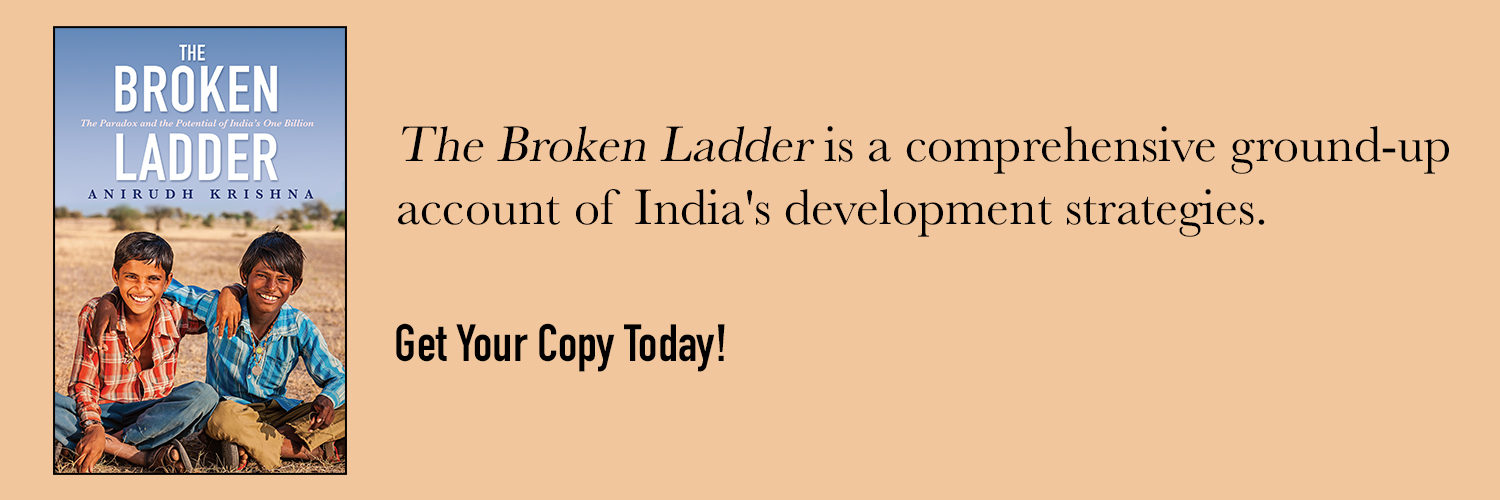
6 Times Everything Everything Warmed Our Hearts
Do you remember your first teenage love? Nicola Yoon’s debut novel Everything Everything is here to remind you of your first love, when anything seems possible and no problem is insurmountable. A gripping tale of love, relationships and world as we know it, Everything Everything has everything to make you laugh, cry and feel everything in between.
Here are six times the book warmed our hearts.
Oh! The feeling when your crush calls!

When Maddy’s clay astronaut is at a dining centre but can’t eat!

When mom cooks something you hate!

The disease at least one teenage girl has every 30 seconds.

The “Out of the World” feeling!

The sickness we don’t mind!

Taking you to the world of young innocent love that knows no bounds, Everything Everything will leave you with a warm, fuzzy feeling in your heart, wanting for more!

Learning from Mistakes
Jeff Bezos, the owner of mighty Amazon constantly features in one of the most successful entrepreneurs of modern time. The way he has steered Amazon through all these years, shows his dedication and skill to make things work against all odds. However, even he failed. A lot of articles have come up post this and many different perspectives have tried to solve this problem from a different angle. Jeff Gothelf and Josh Seiden’s book, Sense and Respond tries to look at such cases from a newer perspective:
‘Amazon’s 2014 Fire Phone disaster is a classic example and, oddly, one that comes from the very same company that developed and frequently uses many of the sense and respond techniques we’re discussing—a company we laud in chapter 1 for that reason.
Motivated by consumers’ increasing use of mobile devices, Amazon began the Fire Phone effort in 2010, just as the iPhone 4 was hitting the market. Mobile users were becoming a more important source of traffic to Amazon, and the company wanted more control of the mobile store than Apple would allow. Apple’s rules about what companies can and can’t do in iOS apps include strict rules about commerce, including one that stipulates that Apple gets a 30 percent share of each in- app sale. 2 (The reason you can’t buy a book on the iOS Kindle app is that Amazon doesn’t want to pay Apple 30 percent of each sale.) So Amazon created the Fire Phone initiative to solve a business problem: it wanted complete control over the store that its customers visited on their mobile devices.
But what would be the value to customers? They struggled to find it, in part because of a strict culture of secrecy around this product. Jeff Bezos, CEO of Amazon, had lots of ideas for cool features. But cool and valuable are not the same thing. Over time, Bezos exerted an increasingly heavier hand in the design and development of the Fire Phone and, according to published reports, ignored feedback from his team that questioned his approach. 3 There was no conversation with the market here, only Bezos talking. He insisted that the phone have a series of fl ashy features like Dynamic Perspective, a 3-D display that didn’t require special glasses and could be seen from all angles; but it delivered little consumer value. Bezos assumed that fl ashy hardware features would make the phone more desirable to consumers than an iPhone. Without a continuous two way conversation with his target audience to guide the development of these features, though, Bezos was making a huge guess.
He guessed wrong. Four years later, in July 2014, the Fire Phone went on sale in the United States. Within days it was clear that consumers were unimpressed— with the design, with the ecosystem, and with the gimmicky features Bezos had pushed for so hard. Priced at $199, the Fire Phone was intended to compete directly with Apple’s iPhone, but consumers didn’t see the value. Instead, they saw it for what it was—a way to easily get to Amazon’s store in a way that was better for Amazon but not significantly better for customers.
After a $170 million write- down of unsold inventory, the Fire Phone was available for 99 cents before finally being sunset in late 2015. The behind- the- scenes stories reveal the arrogance in the top down decision- making process that Bezos led. Although people on the team pushed back, they ended up deferring to the boss. After all, he’d been right many times before. Why wouldn’t he be right again this time?
It might have helped if Bezos had listened to the market. Had he approached some of these decisions as assumptions to be tested and questions to be answered, rather than hunches to be followed blindly, things might have been different.’
You can get your hands at the book here.
This is an excerpt from Jeff Gothelf and Josh Seiden’s Sense and Respond.
Credit: Abhishek Singh
5 Times Anne Frank Showed Us How to Not Take Life for Granted
The Diary of a Young Girl by Anne Frank is one of the most translated and read books across the world, and with good reason. 13-year-old Anne Frank witnessed holocaust first hand cooped up behind a book-shelf hiding a bunker, and still found hopeful words and the spirit to tell the tale.
Here are five times Anne Frank exemplified why we should strive to see the silver lining in the dark clouds.
“I’ve come to the shocking conclusion that I have only one long-sleeved dress and three cardigans to wear in the winter. Father’s given me permission to knit a white wool sweater; the yarn isn’t very pretty, but it’ll be warm, and that’s what counts. Some of our clothing was left with friends, but unfortunately we won’t be able to get to it until after the war. Provided it’s still there, of course.”

“I long to ride a bike, dance, whistle, look at the world, feel young and know that I’m free, and yet I can’t let it show. Just imagine what would happen if all eight of us were to feel sorry for ourselves or walk around with the discontent clearly visible on our faces. Where would that get us?”

“Have you ever heard the term “hostages”? That’s the latest punishment for saboteurs. It’s the most horrible thing you can imagine. Leading citizens—innocent people—are taken prisoner to await their execution. If the Gestapo can’t find the saboteur, they simply grab five hostages and line them up against the wall. You read the announcements of their death in the paper, where they’re referred to as “fatal accidents.””

“Father, Mother and Margot still can’t get used to the chiming of the Westertoren clock, which tells us the time every quarter of an hour. Not me, I liked it from the start; it sounds so reassuring, especially at night. You no doubt want to hear what I think of being in hiding. Well, all I can say is that I don’t really know yet. I don’t think I’ll ever feel at home in this house, but that doesn’t mean I hate it. It’s more like being on vacation in some strange pension. Kind of an odd way to look at life in hiding, but that’s how things are.”

“After May 1940 the good times were few and far between: first there was the war, then the capitulation and then the arrival of the Germans, which is when the trouble started for the Jews. Our freedom was severely restricted by a series of anti-Jewish decrees: Jews were required to wear a yellow star; Jews were required to turn in their bicycles; Jews were forbidden to use street-cars; Jews were forbidden to ride in cars, even their own; Jews were required to do their shopping between 3 and 5 P.M.; Jews were required to frequent only Jewish-owned barbershops and beauty parlors; Jews were forbidden to be out on the streets between 8 P.M. and 6 A.M.; Jews were forbidden to attend theaters, movies or any other forms of entertainment; Jews were forbidden to use swimming pools, tennis courts, hockey fields or any other athletic fields; Jews were forbidden to go rowing; Jews were forbidden to take part in any athletic activity in public; Jews were forbidden to sit in their gardens or those of their friends after 8 P.M.; Jews were forbidden to visit Christians in their homes; Jews were required to attend Jewish schools, etc. “You couldn’t do this and you couldn’t do that, but life went on. Jacque always said to me, “I don’t dare do anything anymore, ‘cause I’m afraid it’s not allowed.””

These heartrending words taken from the diary of 13-year-old Anne Frank was first published in the year 1947 as The Diary of a Young Girl. The first entry made by Anne Frank was on 12 June 1942 and the last words were written on 1 August 1944, a period of two-years when the Franks were in hiding in Amsterdam.
Anne was determined to tell her story after a member of the Dutch government in exile announced in a radio broadcast from London that once the war ended, he would look for eye-witness accounts of the Dutch people’s horrifying plight in the Nazi regime. He specifically mentioned diary entries and letters as examples. Anne not only wrote her diary but also edited it simultaneously, tuning it to perfection for her readers.
So, here’s wishing the world’s most fearless 13-year-old a very happy birthday. May your words never rest in peace, Anne.








